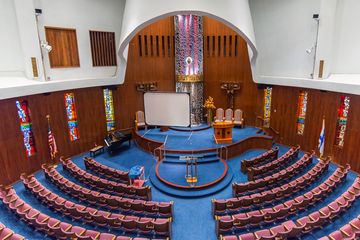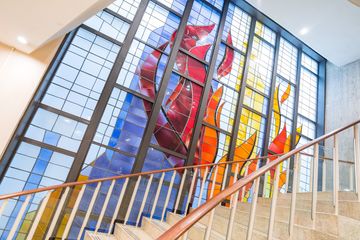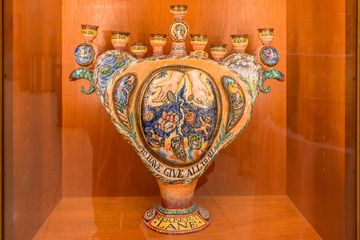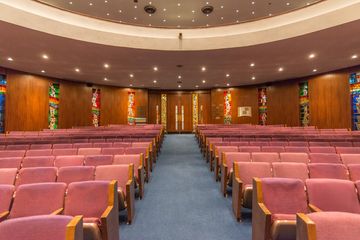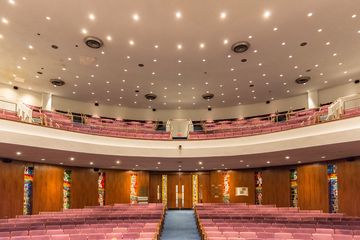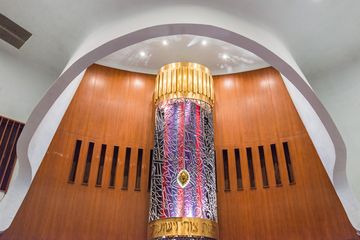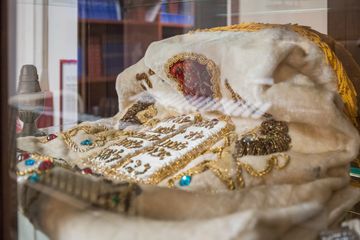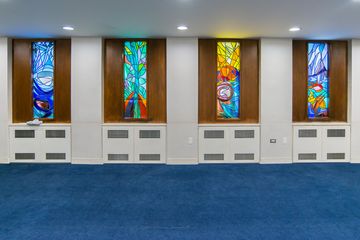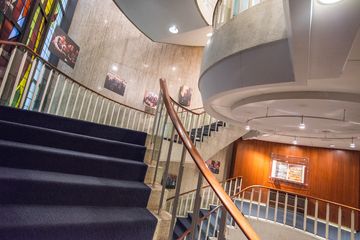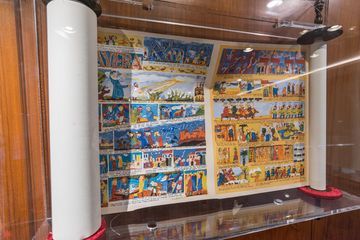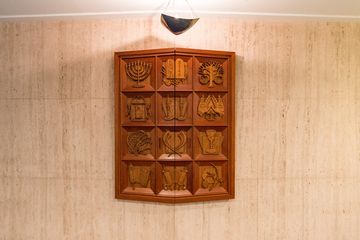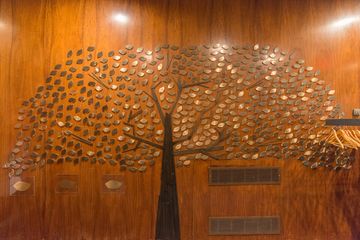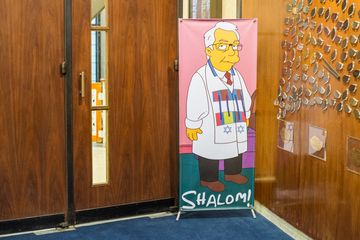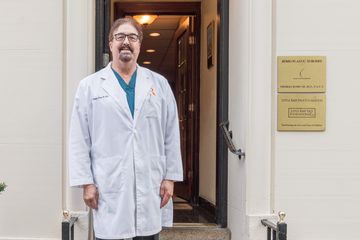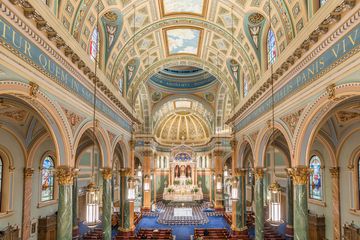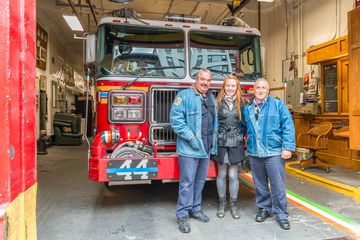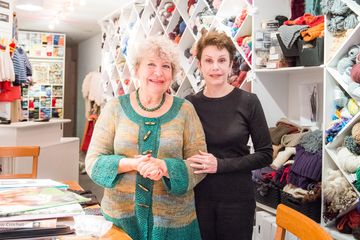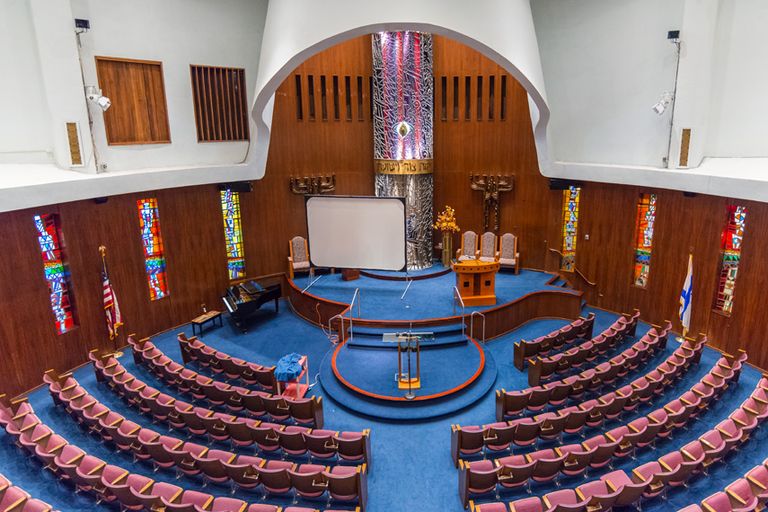
After visiting many century-old synagogues, it was a refreshing change of pace to tour the modern facilities of Temple Israel of the City of New York. Sun shone through the colorful stained glass throughout the 1960s building and a winding spiral staircase occupied the front hall.
The Manhattan Sideways team and I were met by Michele Amaro, the Communications Manager, who took the time to guide us through the eight floors. She led us into the sanctuary, which, as she explained, has “that mod curvy look like the Metropolitan Opera.” The space is enormous, seating 330 people on the first floor and 500 more in the balcony.
The congregation was started in Harlem in 1870 and has since been providing a place of worship for many. Today, on East 75th, it is Rabbi David Gelfand - who joined in 2006 - who continues to keep the traditions alive. According to Michelle, it is he who has helped to revitalize the Temple. Cantor Irena Altshul, Rabbi Melissa Buyer, and Rabbi Jim Stoloff round out the clergy team. Michele mentioned some of the more modern programs that Temple Israel offers, including a “Rockin’ Shabbat” (an interactive worship using modern methodologies and technologies) with Sheldon Low, artist-in-residence, , and a Lunch & Learn talk on “kosher-style sex” by Logan Levkoff, a sex therapist and clergy.on Fridays, which uses multimedia screens in worship, and a talk on “kosher-style sex” by Logan Levkoff, a sex therapist. “This is an extremely, extremely active synagogue. We have things going on all the time.”
Michele continued showing us around, taking us by multiple display cases full of Judaica, including an exquisite menorah donated by Herbert G. Lane, who was one of the chairman of the board of directors for the temple. We also passed multiple pieces of art, photos of smiling congregants, and teaching tools. On one wall, there is a Visual Torah with cartoon-like drawings so that children can better understand the stories. Michele emphasized that education is deeply important to the Temple before taking us to see the religious school, run by Rabbi Melissa Buyer. I was most impressed by the amount of space dedicated to teaching children, including a lounge for the older ones, and “Mitzvah Gardens” where students can plant food that will later be donated to those in need. The preschool rooms, which are color coded, also sport two terraces with playgrounds. We were impressed by their use of the latest technology complete with Macs and smart boards. Though the school plays a significant role in preparing children for their Bar and Bat Mitzvah, Michele stressed that the school is K-12 and covers every stage of religious instruction, creating a foundation of lifelong Jewish learning.
Located underneath the sanctuary, we were amazed by the ballroom, an enormous space, that is in continuous use for various celebrations, including Hanukkah concerts, and Passover seders. When we visited, we observed an early childhood program, headed by director Lisa Samick. The space was filled with toys, and very young children were being rocked to sleep by mothers and nannies in an adjoining room. When I commented to Michele that there was no doubt this is a warm and welcoming community, she beamed, and let me know how proud she was to be a part of Temple Israel.
